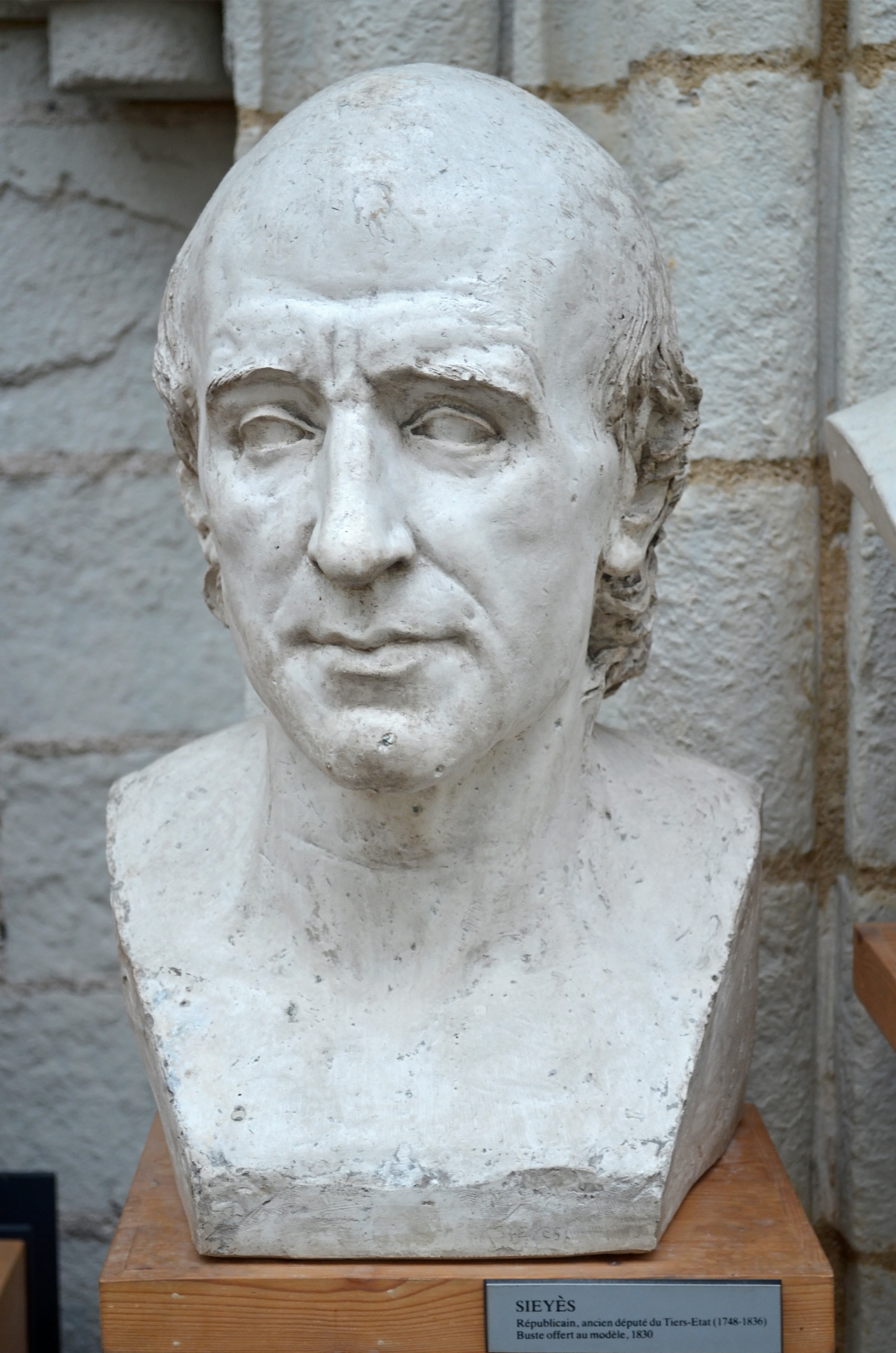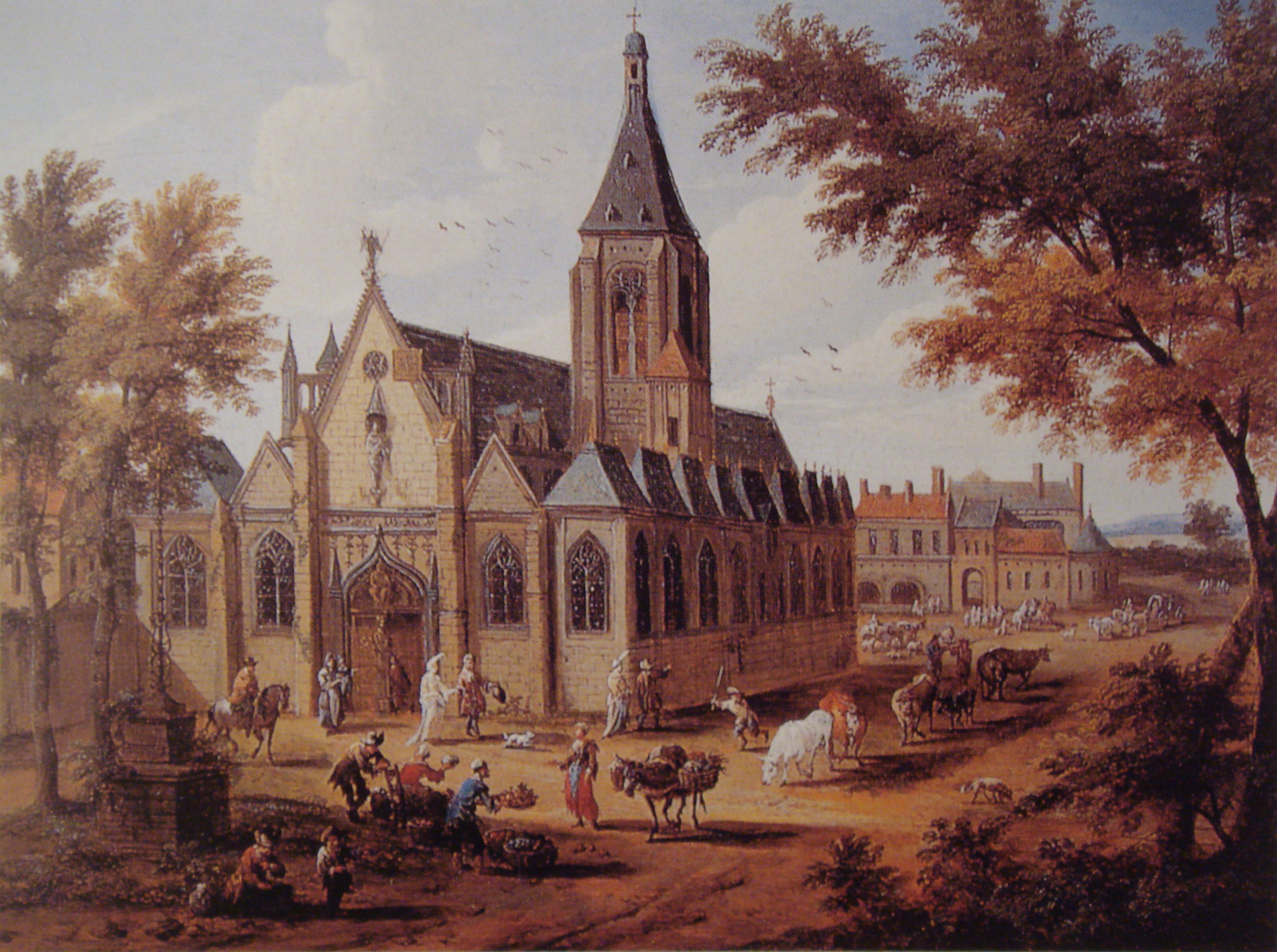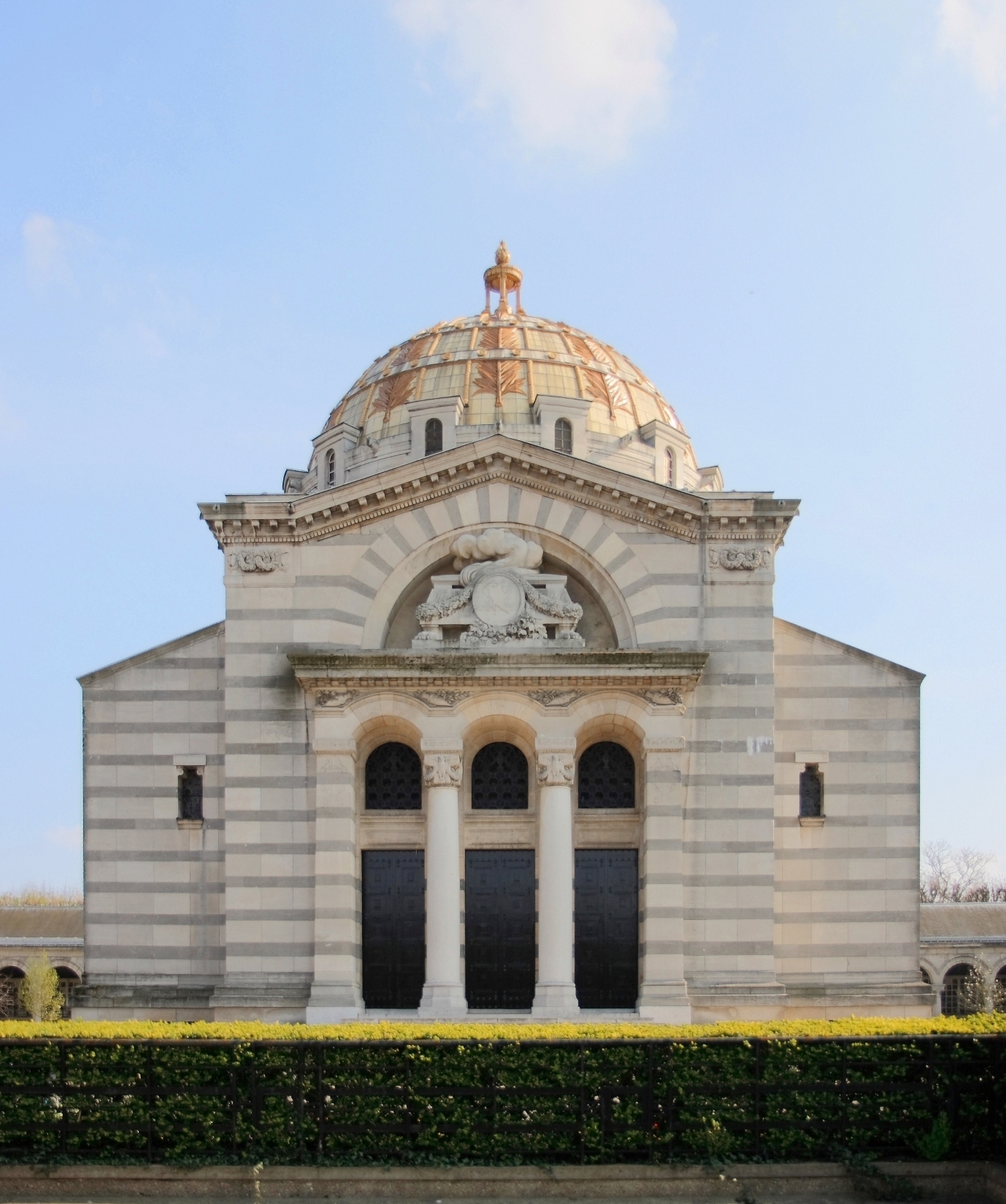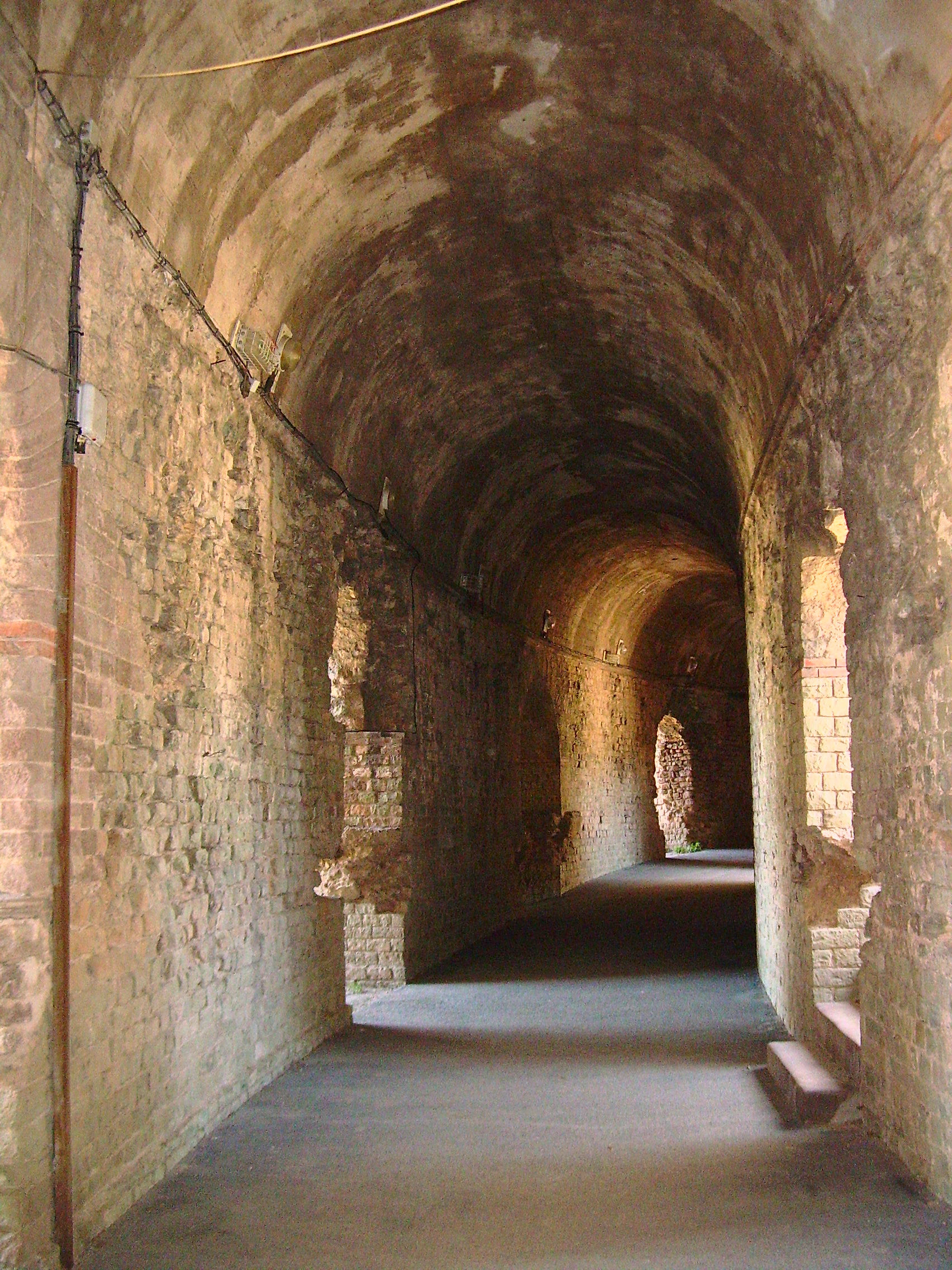|
Emmanuel Joseph Sieyès
Emmanuel-Joseph Sieyès (3 May 174820 June 1836), usually known as the Abbé Sieyès (), was a French Roman Catholic '' abbé'', clergyman, and political writer who was the chief political theorist of the French Revolution (1789–1799); he also held offices in the governments of the French Consulate (1799–1804) and the First French Empire (1804–1815). His pamphlet ''What Is the Third Estate?'' (1789) became the political manifesto of the Revolution, which facilitated transforming the Estates-General into the National Assembly, in June 1789. He was offered and refused an office in the French Directory (1795–1799). After becoming a director in 1799, Sieyès was among the instigators of the Coup of 18 Brumaire (9 November), which installed Napoleon Bonaparte to power. Moreover, apart from his political life, Sieyès coined the term "'' sociologie''", and contributed to the nascent social sciences.Jean-Claude Guilhaumou (2006)« Sieyès et le non-dit de la sociologie : du mot ... [...More Info...] [...Related Items...] OR: [Wikipedia] [Google] [Baidu] |
His Excellency
Excellency is an honorific style (manner of address), style given to certain high-level officers of a sovereign state, officials of an international organization, or members of an aristocracy. Once entitled to the title "Excellency", the holder usually retains the right to that courtesy throughout their lifetime, although in some cases the title is attached to a particular office, and is held only for the duration of that office. Generally people addressed as ''Excellency'' are head of state, heads of state, head of government, heads of government, governors, ambassadors, Bishops in the Catholic Church, Roman Catholic bishops and high-ranking ecclesiastics and others holding equivalent rank (e.g., heads of international organizations). Members of royal family, royal families generally have distinct addresses (Majesty, Highness, etc.) It is sometimes misinterpreted as a title of office in itself, but in fact is an honorific that precedes various titles (such as Mr. President (ti ... [...More Info...] [...Related Items...] OR: [Wikipedia] [Google] [Baidu] |
Abbé
''Abbé'' (from Latin ''abbas'', in turn from Greek , ''abbas'', from Aramaic ''abba'', a title of honour, literally meaning "the father, my father", emphatic state of ''abh'', "father") is the French word for an abbot. It is the title for lower-ranking Catholic clergy in France. History A concordat between Pope Leo X and King Francis I of France (1516) cites III under Kinds of Abbot gave the kings of France the right to nominate 255 commendatory abbots () for almost all French abbeys, who received income from a monastery without needing to render service, creating, in essence, a sinecure. From the mid-16th century, the title of ''abbé'' has been used in France for all young clergy, with or without consecration. Their clothes consisted of black or dark violet robes with a small collar, and they were tonsured. Since such ''abbés'' only rarely commanded an abbey, they often worked in upper-class families as tutors, spiritual directors, etc.; some (such as Gabriel Bonnot de M ... [...More Info...] [...Related Items...] OR: [Wikipedia] [Google] [Baidu] |
Church Of Saint-Sulpice, Paris
, image = Paris Saint-Sulpice Fassade 4-5 A.jpg , image_size = , pushpin map = Paris , pushpin label position = , coordinates = , location = Place Saint-Sulpice6th arrondissement, Paris , country = France , denomination = Roman Catholic , religious institute = Society of the Priests of Saint Sulpice , website = , bull date = , founded date = , founder = , dedication = Sulpitius the Pious , dedicated date = , consecrated date = , relics = , status = Parish church , functional status = Active , heritage designation = , architect = , style = Baroque , years built = , groundbreaking = 1646 , completed date = 1870 , capacity = , length = , width ... [...More Info...] [...Related Items...] OR: [Wikipedia] [Google] [Baidu] |
The Plain
The Plain (french: La Plaine), better known as The Marsh (french: Le Marais), was the majority of independent deputies in the French National Convention during the French Revolution. They sat between the Girondists on their right and Montagnards on their left. Their name arises from the fact their benches were by the debating floor, lower down from the Montagnards. Its members were also known as ''Maraisards'', or derogatorily ''Toads'' (french: "crapauds du Marais") as toads live in marshes. None of these three groups was an organized party as is known today. The Mountain and the Girondists did consist of individuals with similar views and agendas who socialized together and often coordinated political plans. However, The Plain consisted of uncommitted delegates that did not adhere to a single ideology, Retrieved April 16, 2021 were not part of any political club and lacked leadership. They constituted the majority of delegates to the Convention at 389 of 749 and voted with t ... [...More Info...] [...Related Items...] OR: [Wikipedia] [Google] [Baidu] |
French Nationality Law
French nationality law is historically based on the principles of ''jus soli'' (Latin for "right of soil") and '' jus sanguinis'', according to Ernest Renan's definition, in opposition to the German definition of nationality, ''jus sanguinis'' (Latin for "right of blood"), formalised by Johann Gottlieb Fichte. The 1993 Méhaignerie Law, which was part of a broader immigration control agenda to restrict access to French nationality and increase the focus on ''jus sanguinis'' as the citizenship determinant for children born in France, required children born in France of foreign parents to request French nationality at adulthood, rather than being automatically accorded citizenship. This "manifestation of will" requirement was subsequently abrogated by the Guigou Law of 1998, but children born in France of foreign parents remain foreign until obtaining legal majority. Children born in France to tourists or other short-term visitors do not acquire French citizenship by virtue o ... [...More Info...] [...Related Items...] OR: [Wikipedia] [Google] [Baidu] |
Père Lachaise Cemetery
Père Lachaise Cemetery (french: Cimetière du Père-Lachaise ; formerly , "East Cemetery") is the largest cemetery in Paris, France (). With more than 3.5 million visitors annually, it is the most visited necropolis in the world. Notable figures in the arts buried at Père Lachaise include Michel Ney, Frédéric Chopin, Émile Waldteufel, Édith Piaf, Marcel Proust, Georges Méliès, Marcel Marceau, Sarah Bernhardt, Oscar Wilde, Thierry Fortineau, J.R.D. Tata, Jim Morrison and Sir Richard Wallace. The Père Lachaise is located in the 20th arrondissement of Paris, 20th arrondissement and was the first garden cemetery, as well as the first municipal cemetery in Paris. It is also the site of three World War I memorials. The cemetery is located on the Boulevard de Ménilmontant. The Paris Métro station Philippe Auguste (Paris Métro), Philippe Auguste on Paris Métro Line 2, Line 2 is next to the main entrance, while the station Père Lachaise (Paris Métro), Père Lachaise, on both ... [...More Info...] [...Related Items...] OR: [Wikipedia] [Google] [Baidu] |
July Monarchy
The July Monarchy (french: Monarchie de Juillet), officially the Kingdom of France (french: Royaume de France), was a liberal constitutional monarchy in France under , starting on 26 July 1830, with the July Revolution of 1830, and ending 23 February 1848, with the Revolution of 1848. It marks the end of the Bourbon Restoration (1814–1830). It began with the overthrow of the conservative government of Charles X, the last king of the House of Bourbon. , a member of the more liberal Orléans branch of the House of Bourbon, proclaimed himself as ("King of the French") rather than "King of France", emphasizing the popular origins of his reign. The king promised to follow the ''juste milieu'', or the middle-of-the-road, avoiding the extremes of both the conservative supporters of Charles X and radicals on the left. The July Monarchy was dominated by wealthy bourgeoisie and numerous former Napoleonic officials. It followed conservative policies, especially under the influence ... [...More Info...] [...Related Items...] OR: [Wikipedia] [Google] [Baidu] |
Kingdom Of France
The Kingdom of France ( fro, Reaume de France; frm, Royaulme de France; french: link=yes, Royaume de France) is the historiographical name or umbrella term given to various political entities of France in the medieval and early modern period. It was one of the most powerful states in Europe since the High Middle Ages. It was also an early colonial power, with possessions around the world. France originated as West Francia (''Francia Occidentalis''), the western half of the Carolingian Empire, with the Treaty of Verdun (843). A branch of the Carolingian dynasty continued to rule until 987, when Hugh Capet was elected king and founded the Capetian dynasty. The territory remained known as ''Francia'' and its ruler as ''rex Francorum'' ("king of the Franks") well into the High Middle Ages. The first king calling himself ''rex Francie'' ("King of France") was Philip II, in 1190, and officially from 1204. From then, France was continuously ruled by the Capetians and their cadet lin ... [...More Info...] [...Related Items...] OR: [Wikipedia] [Google] [Baidu] |
Fréjus
Fréjus (; ) is a commune in the Var department in the Provence-Alpes-Côte d'Azur region in Southeastern France. In 2019, it had a population of 54,458. It neighbours Saint-Raphaël, effectively forming one urban agglomeration. The north of the commune forms part of the Massif de l'Esterel. On 2 December 1959, the Malpasset Dam, on the Reyran River above the city of Fréjus, ruptured, killing over 400 people. History The origins of Frejus probably lie with the Celto- Ligurian people who settled around the natural harbour of Aegytna. The remains of a defensive wall are still visible on Mont Auriasque and Cap Capelin. The Phocaeans of Marseille later established an outpost on the site. Foundation Frejus was strategically situated at an important crossroads formed by the Via Julia Augusta (which ran between Italy and the Rhône) and the Via Domitia. Although there are only few traces of a settlement at that time, it is known that the poet Cornelius Gallus was born there in 6 ... [...More Info...] [...Related Items...] OR: [Wikipedia] [Google] [Baidu] |
Estates General (France)
In France under the Ancien Régime, the Estates General (french: États généraux ) or States-General was a legislative and consultative assembly of the different classes (or estates) of French subjects. It had a separate assembly for each of the three estates (clergy, nobility and commoners), which were called and dismissed by the king. It had no true power in its own right as, unlike the English Parliament, it was not required to approve royal taxation or legislation. It served as an advisory body to the king, primarily by presenting petitions from the various estates and consulting on fiscal policy. The Estates General first met in 1302 and 1303 in relation to King Philip IV's conflict with the papacy. They met intermittently until 1614 and only once afterward, in 1789, but were not definitively dissolved until after the French Revolution. The Estates General were distinct from the ''parlements'' (the most powerful of which was the Parliament of Paris), which started as ap ... [...More Info...] [...Related Items...] OR: [Wikipedia] [Google] [Baidu] |
Var (department)
Var (, ) is a department in the Provence-Alpes-Côte d'Azur region of Southeastern France. It takes its name from the river Var, which flowed along its eastern boundary, until the boundary was moved in 1860 and the department is no longer associated with the river. The Var department is bordered on the east by the department of Alpes-Maritimes, to the west by Bouches-du-Rhône, to the north of the river Verdon by the department of Alpes-de-Haute-Provence and to the south by the Mediterranean Sea. It had a population of 1,076,711 in 2019.Populations légales 2019: 83 Var INSEE is the largest city and administrative capital ( |







